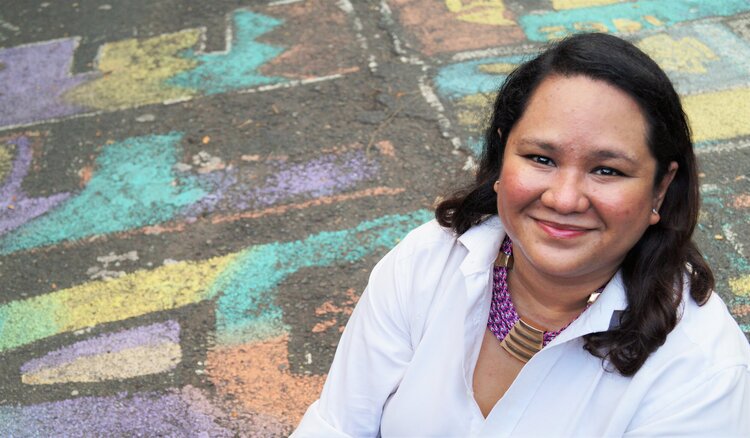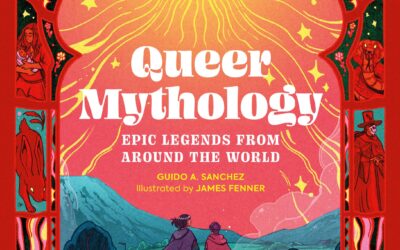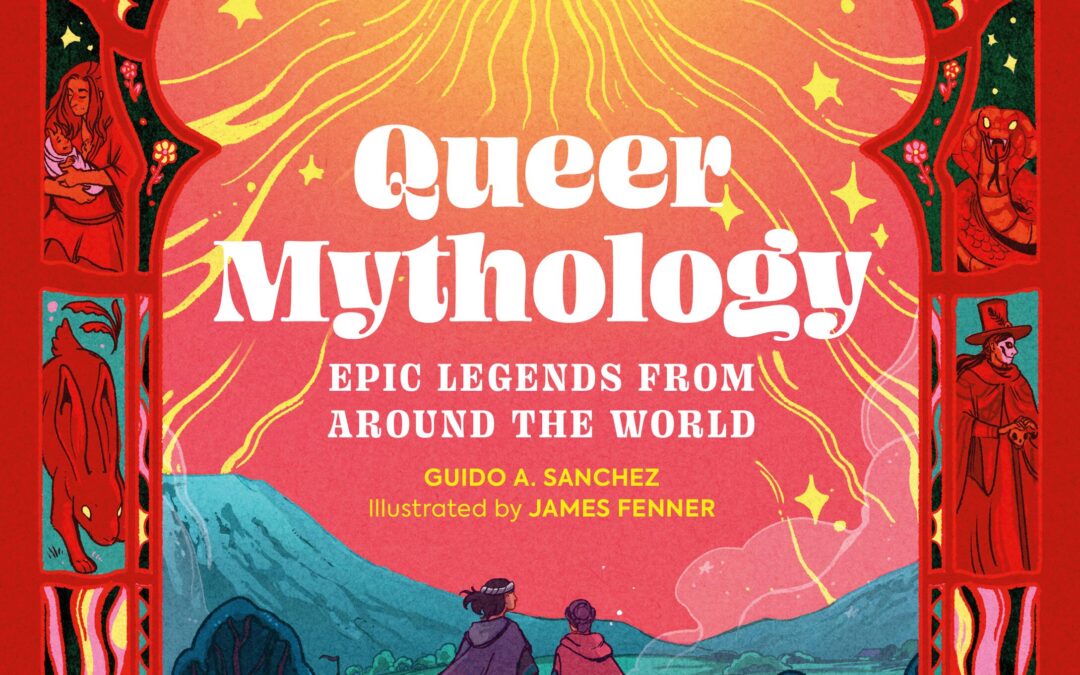Sophia N. Lee grew up in the Philippines. She wanted to be many things growing up: doctor, teacher, ballerina, ninja, crime-fighting international spy, wizard, time traveler, journalist, and lawyer. She likes to think she can be all these things and more through writing. She is the author of Soaring Saturdays; What Things Mean, which won a Scholastic Asian Book Award’s grand prize; Holding On; and Lolo’s Sari-sari Store.
Christine Almeda is a Filipino American freelance illustrator and lover of sunshine from New Jersey. Lolo’s Sari-sari Store is her first picture book. Christine believes that, through the power of creativity and storytelling, art can make life more beautiful.
I had the opportunity to interview Sophia and Christine, which you can read below.
First of all, welcome back to Geeks OUT! Could you tell us a little about yourselves?
SL: Hello to the readers of Geeks OUT! I’m Sophia N. Lee, a Filipino author. I write books for kids and young adults.
I was born and raised in the Philippines, and I grew up around a huge extended family – on my mother’s side, I have 11 other aunts and uncles, and what must be close to a hundred cousins, nephews, and nieces by now. On my father’s side, I have a lot of lolos and lolas, because my grandmother had eight siblings that lived close to where she did in the province. It was really fun growing up around so many colorful individuals – so many of my story inspirations come from my memories of being with them.
Last year, I released a picture book titled Holding On, written by me and illustrated by Isabel Roxas. It’s about a girl who visits her Lola (Filipino for grandmother) in the Philippines over the course of different summers, and how she learns to love and to hold on by observing the way her Lola does it. This year, Christine and I released a second book titled Lolo’s Sari-sari Store, and we’re so excited to share it with everyone. It’s about choosing kindness, and learning to build community, no matter where one finds themselves in.
CA: Hello! I’m a Filipino-American freelance illustrator from NJ with a love for children’s media.
How would you describe your literary/artistic background? As a creative, what drew you to writing/illustrating, especially picture books? Were there any books that inspired that storytelling path?
SL: Even from a young age, I have always been writing – especially growing up in a family like mine, there were always lots of stories to observe. But I think too that growing up in a household that had so many people in it led me to becoming a reader. I loved the quiet that books afforded me. I loved being able to escape into these different worlds beyond what I was able to imagine. Because I was also surrounded by the books everyone else in my house was reading, I learned to read widely at a young age. While I was raised on Nancy Drew and devoured most of The Sweet Valley series, in secret I also started reading many of my dad’s hard-boiled mysteries, my older cousins’ Sweet Dreams books, and my Titas’ collections of Harold Robbins, Danielle Steeles, and Judith Krantz books. I thought – how cool to be able to live all of these different lives and to understand people in deeper ways. I appreciated being able to tell a lot about a person based on the kind of books they were reading.
Once I started developing a keener sense of what I liked though, I realized that the books I naturally gravitated towards, the ones I read over and over for comfort, were the books I read when I was younger. I loved that books always afforded me a safe space to kind of learn and figure out the kind of person that I wanted to be, and so when I began dreaming of becoming a writer, I knew that I wanted to write stories for young readers. I think there’s something really special about the way a child or even a teen loves a book – when a young person reads a book, they themselves are wide open, and I think parts of the characters you create live on in them.
That’s why it’s both so hard and so important – it’s such a delicate balance, and you always want to get it right, because the stakes are so high.
CA: I grew up loving anime and animation, as well as reading a lot of manga – it definitely still influences how I draw. I went to college thinking I wanted to work in animation/visual development, but illustration and books was what I always gravitated towards.

What can you tell us about your latest book, Lolo’s Sari-sari Store? What was the inspiration for this story?
SL: Lolo’s Sari-sari Store is one of those stories that I’ve carried with me for a really long time. We had a sari-sari store in our family when I was growing up, and in the summer, my cousins and I would take turns watching the store. As a kid, I loved being able to have access to all the snacks I wanted, but what I especially loved about watching the store is how I’d be able to see almost the entire community passing by. Our sari-sari store was a community hub, just as many sari-sari stores around the Philippines are. People go there to get what they need, but they also go there to be with people they’re at home with.
My Lola’s eldest sister Aurora also had a sari-sari store in the province, and when I was there, one of my favorite things to do was to run her store with her. She didn’t have children of her own, but it was almost like the whole town was her family – people came to tell her stories, and to ask her for advice, to share good news and bad with her. She would let me go home from her store with whatever I wanted.
We had “sukis” or regulars who trusted us to always carry what they needed. We made sure to stock up on goods at different price points to cater to everyone in the community. From a young age, I understood that things like sachet packets (the smallest unit of shampoo or conditioner or lotion one could buy) existed because not everyone would be able to afford entire bottles or packages of those products. I knew what “lista” (Filipino for keeping a tab) meant, and I understood that those were kept for people who didn’t have money to pay for their purchases until a certain date. I learned so much about kindness, empathy, and generosity from how the grownups around me ran our store. I knew I would want to write about those stories someday – and I’m glad that I’m able to share a part of that with everyone.
Looking at Lolo’s Sari-sari Store and the other books you’ve both worked on, it appears Filipino representation seems to be an important element in your creativity. Could you tell us what it might mean to you to see that representation on the page?
SL: Being able to see characters that look like me in books means the world to me. Growing up just after martial law ended in the Philippines, there weren’t a lot of stories written by and for Filipinos. As a child, I had this silly notion that all books came from America, because everything I had access to only ever featured mostly white, blonde, blue-eyed characters – and they never lived in towns like ours, or had incredibly large extended families that looked like mine. I couldn’t articulate then how worried I was about what that meant – weren’t we meant to be heroes in stories? Were our stories not good enough or not interesting enough?
I’m glad to see that’s changing – but sometimes, I feel as though it’s not changing fast enough. We’re still learning how important it is for kids to see themselves represented in the media that they consume. In the Philippines, we’re still battling remnants of colonial mentality – whether it’s through colorism, or from thinking that Western ideas and products are better – I’m so glad that I can put a Lola, a Lolo, a sari-sari store front and center in a story. It’s such a privilege to be able to contribute in this way.
CA: It’s always fun to see and relate to something in a book, especially if you’ve never seen it on a regular basis while growing up. So I hope people are just as excited as I am to see more Filipino representation in their books.
For Lolo’s in particular, it’s been so nice to see the reaction from the parents and adults who read the book to the children in their life. The feeling of homesickness in the story really speaks to their own story of immigrating from the Philippines. Children’s books are for all ages.
As a creative, who or what would you say are some of your greatest creative influences and/or sources of inspiration?
CA: There are SO many illustrators whose work constantly inspires me. This includes artists like Dung Ho, Elizabeth Shippen Green, or Matt Rockefeller. In terms of subjects or story, I’m usually inspired by my family, food, seasons, and childhood memories.

When you’re writing/illustrating picture books, what typically goes through your mind? And how would you describe your creative routine?
SL: For me the most difficult part of writing the story, especially for picture books, is coming upon a good idea. I can go for months just thinking about concepts in my head – from memories I want to explore, to stories that I’ve admired, to things that I think would make for good stories. It’s never easy to come upon an idea that will translate well into a picture book format, because you’re striking a balance between having the words and the pictures tell the story. Once I’m able to find that idea and figure out how it works, at least in my head, the next step is deciding how best to tell the story – how and where does it begin? Where do I want it to go? Once I know that, the actual writing part goes really quickly. For example – it took me months to figure out everything I wanted to say for my picture book Holding On, but once I did, the actual writing of the first draft took about 30 minutes. From there, I tweak until I feel like the text is the best version of itself, and then I share it with readers I trust before sending it off to my agent Wendi.
CA: I try to let the story play out like a movie or show in my mind, so my process involves a lot of sketches and various compositions. I want to see the character arcs, the passage of time, and bring a different angle to each page.
As a creative, who has collaborated with various illustrators/writers for the picture book projects you’ve worked on, how would you describe the collaboration process? Or the general process that goes into making a picture book?
SL: After I’ve turned in the manuscript to my editor, I try to be really hands off. I try to give the illustrator as much space as they need to bring the story to life visually. I know I’m not an expert in illustration. I don’t want to ever impose my vision on theirs while they’re working on the art because I trust that they know how best to enhance the story. I think if I ever had an art note, it was just to emphasize that I wanted to make sure the characters were depicted as kayumanggi or brown-skinned, the way the majority of Filipinos are. Everything else, we go back and forth on – I love seeing how spreads change from the tweaks we make. So far – this approach has paid off for me. I’ve been so lucky to work with talented illustrators, art directors, and editors. I’m so proud of the books we’ve made together – I know I’m biased, but they are so beautiful!
CA: As the illustrator, I typically work with the art director or the editor. We go back and forth about the art with notes and feedback that they’ve discussed with the author. This part is so valuable to me as I always want the art to get better, which can be achieved with different creative perspectives.
Many creatives would say one of the most challenging parts of working on a book is finishing one. What strategies would you say helped you accomplish this?
SL: Every time I face a blank page, it’s a challenge for me. I think that’s why for me, so much of writing is mental work. I like to think of the story and its parts for weeks, sometimes even months, before I actually get to writing. It’s almost like the story takes place in my head first, and I don’t get started actually writing it until the story takes on a clearer form in my mind, and I have a solid idea of how I want it to flow. Sometimes, the writing will take me elsewhere, but having all of those mental markers is a bit like a roadmap for me. It lets me move forward and get things down on the page.
CA: Time management and staying organized – still learning how to do this!
What advice would you give to other aspiring writers/illustrators?
SL: Don’t be afraid to let yourself be curious about things. Wherever you find yourself, take a moment to see what stories are taking place around you. Also – don’t let your fear of being bad prevent you from getting things down on the page. Every first draft is imperfect – but if you edit yourself before you even finish, you’ll never be able to get to the heart of your story. Embrace being bad, have the heart of a beginner, and don’t be afraid to experiment!
CA: It’s definitely not always going to be easy, but if you’re going to draw – draw what you love!
Are there any other projects you are working on or thinking about that you are able to discuss?
SL: I just started on a picture book manuscript inspired by my Lolo Tom, who was a photographer. I’m also working on a YA novel manuscript that’s about food. So excited for everything to come together.
CA: “Box of Dreams” written by Faith Kazmi, coming out May 2024- so glad to have illustrated another Filipino-American story, this time about balikbayan boxes and returning home.
Finally, any new books/authors would you recommend to the readers of Geeks OUT?
SL: Candy Gourlay is an author that I admire so much – I think everyone should read her newest book, Wild Song. Other books I’m excited about are Chloe and the Kaishao Boys by Mae Coyiuto, Freddy & the Family Curse by Tracy Badua, and Marikit and the Ocean of Stars by Caris Avendaño Cruz.
CA: “Maribel’s Year” written by Michelle Sterling and illustrated by Sarah Gonzales.







0 Comments